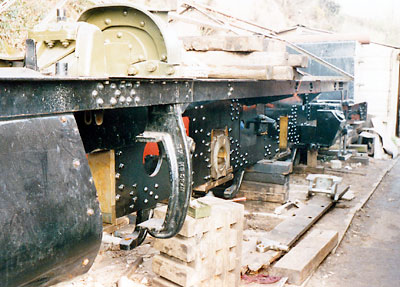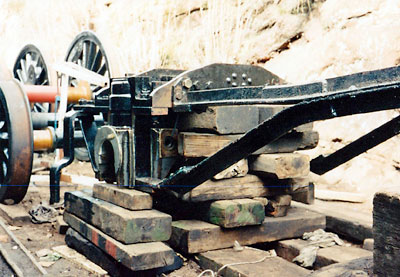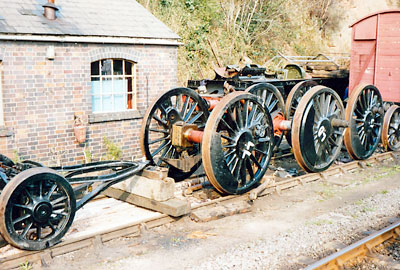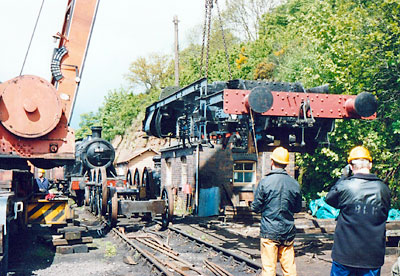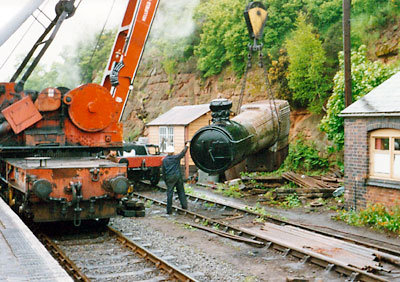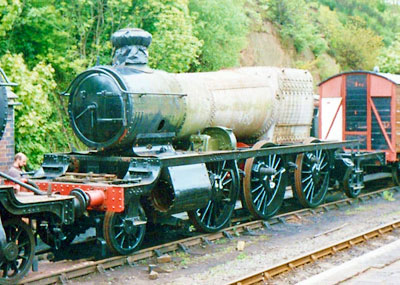
Early Days Of The Fund
In the autumn of 1972 two working members of the fledgling Dean Forest Railway Society decided to investigate the possibility of purchasing a G.W.R. 2‑6‑2T from Dai Woodham’s scrapyard at Barry in South Wales, and all five remaining 4100’s were surveyed. No 4150 was chosen as the most complete and in the best condition having been previously reserved by others but not purchased. In early 1973 a formal inspection by a B.R. boilersmith confirmed this choice and Dai Woodham set the price at £2,750.
A committee was formed and The 4150 Fund was announced to the world on 5th March 1973 with an initial share issue of up to 5000 shares at £1 each. Mr Woodham, having a habit of cutting up engines whenever trade in other areas grew slack encouraged a quick sale and with the aid of a generous private loan the full purchase price was handed over in July of that same year. Having become the proud owners of 78 tons of scrap locomotive, the Fund Committee spent each weekend dismantling valve gear and freeing rusted brakes etc. ready for the journey to the engine’s new home. During this time a team was in action raising much needed funds, some things never change.
In company with No.7812 ‘Erlestoke Manor’, No 4150 left Barry in 1974 and was towed by a Class 25 diesel to the Dean Forest Railway at Parkend. The engine was left on the Marsh Branch siding but site difficulties meant that no restoration was possible. This situation remained for three years, and in 1977 the Fund Committee put to the shareholders the possibility of moving to a new home. An approach was made to the Severn Valley Railway, which proved very receptive. A ballot was held among the 4150 Fund shareholders and there was an overwhelming vote in favour of taking her to the SVR. Travelling by rail once more and after an overnight stop at Gloucester Horton Road Depot she arrived at the SVR’s Bewdley site on 19thJanuary 1978.
After a further period of storage, the engine was dismantled and the wheels sent to Bridgnorth for tyre turning and journal skimming. The frames underwent a lengthy period of horn grinding by hand and axleboxes were re-metalled and refitted. Eventually the components of boiler, frames and wheels were re-united, and springs and brake gear refitted followed by rebuilt pistons and valves. Work on the chassis continued, and with side rods on 4150 began to look like a steam locomotive again, but by the mid 80s fund raising and restoration progress slowed considerably; 2004 marked the 30th year that 4150 had been awaiting completion of her restoration, far longer than most loco restoration projects and indeed far longer than the 18 years spent as a working locomotive.
There was clearly a need for more rapid progress, and in 2007 steps were taken to make a fresh start.
